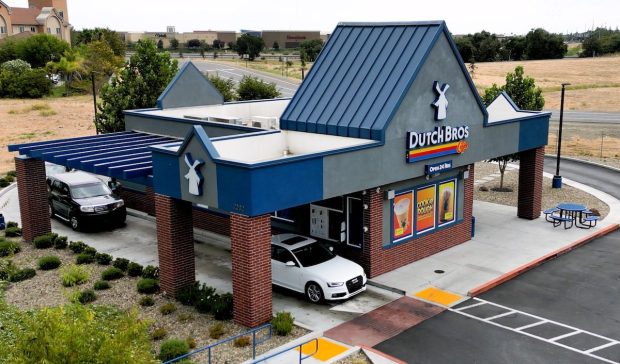Restaurant Customers Prioritize Cost Savings Over Convenience Amid Inflation

As economic challenges persist, diners are becoming less willing to pay the premium for convenience.
Take, for instance, drive-thru coffee chain Dutch Bros, which noted in its preliminary fourth quarter earnings report Monday (Jan. 9) a modest decrease in same-store sales after a period of growth.
The company attributed this decline to the openings of new locations close to existing ones, but this explanation fails to account for the impact of diners’ changing habits. After all, Dutch Bros’ rate of opening new locations in the quarter was below its rate for the full year, and yet full-year same-store sales were positive. It was only in the last few months of the year that they took a downturn.
Given the drive-thru’s centrality to the chain’s value proposition — 90% of the company’s sales come via that channel — the brand’s central promise to customers is that of convenience.
Yet, as cost pressures have consumers reevaluating their spending, many are deciding that convenience is a luxury they cannot afford.
In fact, research from PYMNTS’ study “Consumer Inflation Sentiment: Inflation Slowly Ebbs, but Consumer Outlook Remains Gloomy,” which drew from a survey of more than 2,100 consumers, found that 78% have been eating at home more often to save money amid inflation.
Consequently, the idea of spending (for instance) $3.50 on a cup of coffee from the drive-thru is no longer worth it for many, when they could be spending a tenth of that for a cup at home.
Sure enough, across the industry, the trend of choosing cost savings over convenience can be seen.
Quick-service restaurant (QSR) giant Domino’s Pizza, known for its delivery business, has been seeing those delivery sales fall. Conversely, pickup sales are on the rise, showing that consumers are seeking out less expensive fulfillment options.
The company reported in October that carryout same-store sales grew 19.6% year-over-year in the third quarter, while delivery sales were down 7.5% year-over-year. Plus, CEO Russell Weiner noted that consumers are not only trading down to pickup but also opting out of restaurant dining entirely, as PYMNTS data reveals, to go with lower-priced food-at-home options.
“Our research shows that a relatively higher delivery costs might lead some customers to prepare meals at home,” Weiner said.
Indeed, these economic pressures are inhibiting restaurants’ digital growth, with eCommerce engagement flatlining after a period of consistent increases, as is revealed in PYMNTS’ study “12 Months Of The ConnectedEconomy™: 33,000 Consumers On Digital’s Role In Their Everyday Lives,” which draws from responses from tens of thousands of U.S. consumers.
“Fifty-six percent of consumers placed food orders for home delivery via restaurants’ sites or delivery platforms in November 2021,” the study noted. “One year later, that share held steady at 56%.”
This prioritization of frugality over convenience can also be seen in investors’ responses to restaurant aggregators over the course of last year. For example, DoorDash stock took a 67.9% loss in 2022. After enjoying triple-digit revenue percentage growth rates in 2020, its growth in 2021 dropped to 69% and is currently at about half that rate.